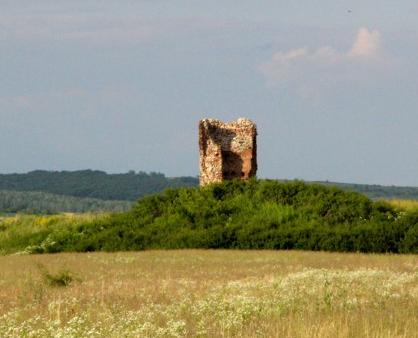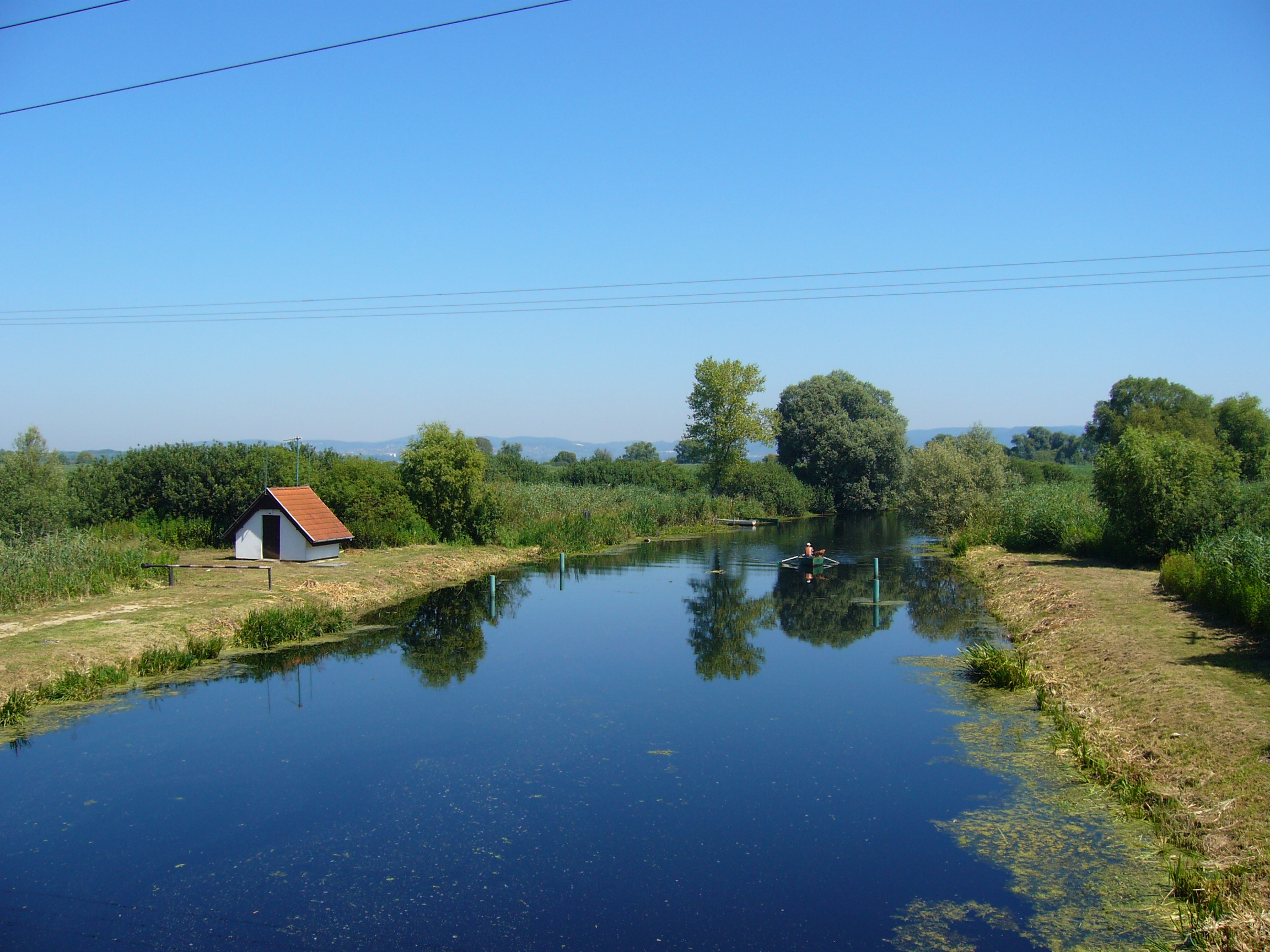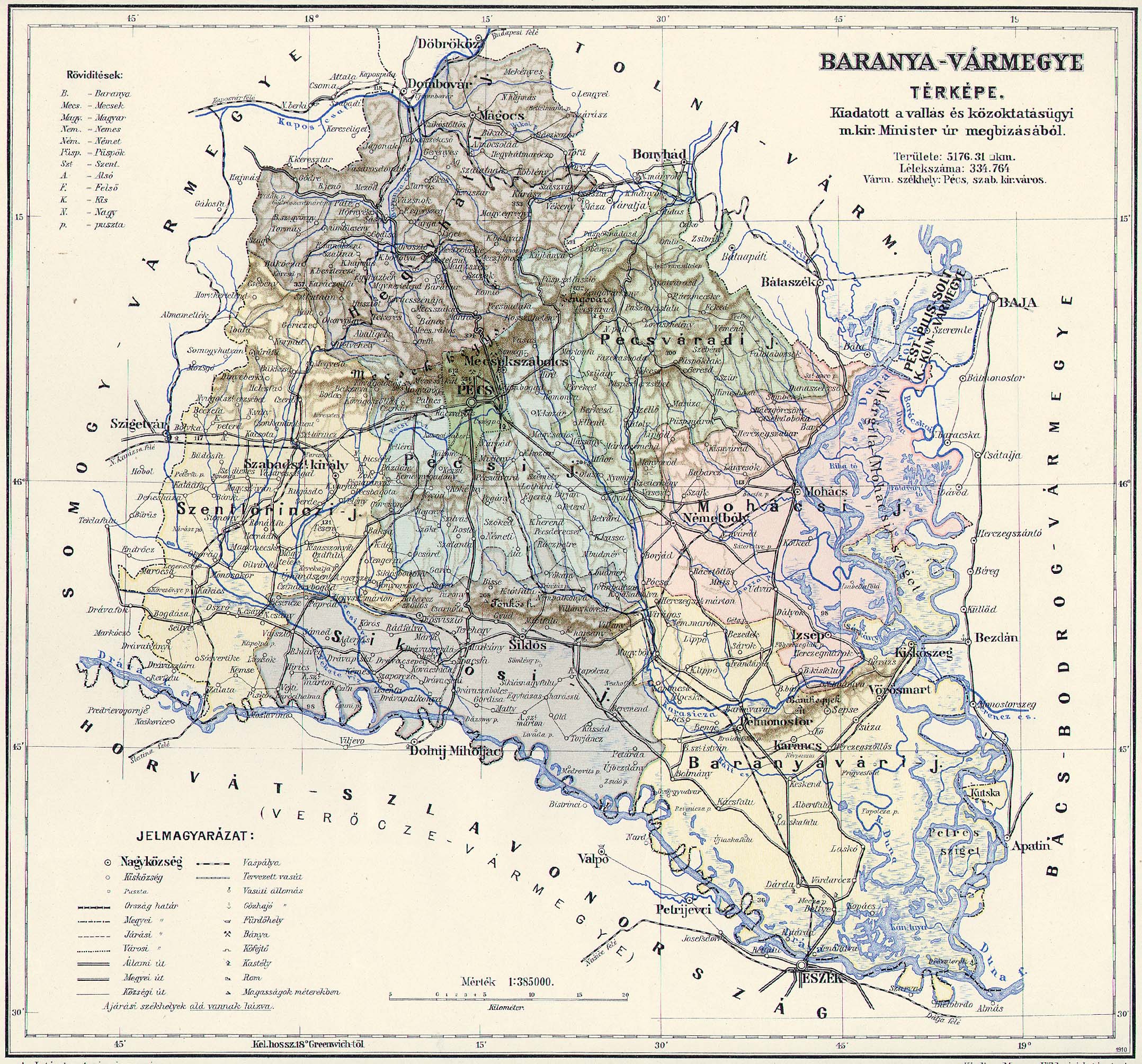|
Paul Geregye
Paul from the kindred Geregye ( hu, Geregye nembeli Pál; ''c''. 1206 – 1270 or 1271) was an influential Hungarian baron following the Mongol invasion of 1241. He served as Judge royal twice during the reign of Béla IV of Hungary. Family Paul was born around 1206 into the ''gens'' Geregye as the son of Eth I, wo was Voivode of Transylvania earlier in 1200. He also had a younger brother, Geregye I, the ancestor of the Egervári family from Vas County. Paul married to an unidentified granddaughter of Palatine Pat Győr around 1228 (while her sister was the wife of Stephen Csák, Ban of Severin). Historian Attila Zsoldos considers Pat was among those noblemen, who were plotting to dethrone Andrew and crown his eldest son, the eight-year-old Béla in 1214. Following that he became disgraced in the royal court and was among the young Béla's supporters. The marriage between Paul and Pat's granddaughter was due to strengthen the relationship between Béla's partisans. They had f ... [...More Info...] [...Related Items...] OR: [Wikipedia] [Google] [Baidu] |
Barcău
The Barcău or Bereteu (Romanian or Berettyó in Hungarian) is a river which has its origin in Sălaj County, Romania. It is about long with a watershed area of .Analysis of the Tisza River Basin 2007 IPCDR After crossing in Romania and Hajdú-Bihar and |
Stephen Csák, Ban Of Severin
Stephen from the kindred Csák ( hu, Csák nembeli István; died after 1269) was a Hungarian baron and military leader in the 13th century. He was a confidant of King Béla IV of Hungary since his heir years to the throne. He led the Hungarian army to victory against the Serbs, who invaded the Duchy of Macsó in 1268. Family Stephen was born into an unidentified branch of the powerful and wealthy ''gens'' (clan) Csák, as the son of Csák,Engel: ''Genealógia'' (Genus Csák 10., fragments) who was a confidant of Duke Béla in the 1220s, then served as ''ispán'' of Sopron County from 1235 to 1240, after Béla IV ascended the Hungarian throne. Stephen had five brothers, including Gug (II). Stephen's grandfather Gug (I) was the first known member of the branch. Around 1228, Stephen married an unidentified granddaughter of the influential baron Pat Győr. She had a sister (her name is unknown too), who became the wife of Paul Geregye around the same time. Through the legal doctrin ... [...More Info...] [...Related Items...] OR: [Wikipedia] [Google] [Baidu] |
Duke Of Slavonia
The Duke of Slavonia ( hr, slavonski herceg; la, dux Slavoniae), also Duke of Dalmatia and Croatia ( hr, herceg Hrvatske i Dalmacije; la, dux Dalmatiae et Croatiae) and sometimes Duke of "Whole Slavonia", Dalmatia and Croatia ( hr, herceg cijele Slavonije, Hrvatske i Dalmacije; la, dux totius Sclavoniae, Croatiae et Dalmatiae) was a title of nobility granted several times in the 13th and 14th centuries, mainly to relatives of Hungarian monarchs or other noblemen. The title of duke signified a more extensive power than that of the Ban of Slavonia or Ban of Croatia. List of Dukes * Álmos (1084-1095) * Stephen III (1147-1162) * Béla III (1162-1172) * Emeric (1194-1196) * Andrew II (1198-1204) * Béla IV (1220-1226) * Coloman (1226-1241) * Denis Türje (1241-1245) * Stephen V (1245-1257) * Béla (1260-1269) * Ladislaus IV (1270-1272) * Andrew (1274-1278) * Andrew III (1278-1290) * Tomasina Morosini (1290-1300) * (1300-1301) * Stephen (1353-1354) * Charles of Durazzo (1371-1376 ... [...More Info...] [...Related Items...] OR: [Wikipedia] [Google] [Baidu] |
Andrew II Of Hungary
Andrew II ( hu, II. András, hr, Andrija II., sk, Ondrej II., uk, Андрій II; 117721 September 1235), also known as Andrew of Jerusalem, was King of Hungary and Croatia between 1205 and 1235. He ruled the Principality of Halych from 1188 until 1189/1190, and again between 1208/1209 and 1210. He was the younger son of Béla III of Hungary, who entrusted him with the administration of the newly conquered Principality of Halych in 1188. Andrew's rule was unpopular, and the boyars (or noblemen) expelled him. Béla III willed property and money to Andrew, obliging him to lead a crusade to the Holy Land. Instead, Andrew forced his elder brother, King Emeric of Hungary, to cede Croatia and Dalmatia as an appanage to him in 1197. The following year, Andrew occupied Hum. Despite the fact that Andrew did not stop conspiring against Emeric, the dying king made Andrew guardian of his son, Ladislaus III, in 1204. After the premature death of Ladislaus, Andrew ascended the throne ... [...More Info...] [...Related Items...] OR: [Wikipedia] [Google] [Baidu] |
Chișlaz
Chișlaz ( hu, Vámosláz) is a Commune in Romania, commune in Bihor County, Crișana, Romania with a population of 3,135 people. It is composed of seven villages: Chiraleu (''Berettyókirályi''), Chișlaz, Hăucești (''Hőke''), Mișca (''Micske''), Poclușa de Barcău (''Poklostelek''), Sărsig (''Sárszeg'') and Sânlazăr (''Szentlázár''). References Communes in Bihor County Localities in Crișana {{Bihor-geo-stub ... [...More Info...] [...Related Items...] OR: [Wikipedia] [Google] [Baidu] |
Commune In Romania
A commune (''comună'' in Romanian language, Romanian) is the lowest level of administrative subdivision in Romania. There are 2,686 communes in Romania. The commune is the rural subdivision of a Counties of Romania, county. Urban areas, such as towns and cities within a county, are given the status of ''Cities in Romania, city'' or ''Municipality in Romania, municipality''. In principle, a commune can contain any size population, but in practice, when a commune becomes relatively urbanised and exceeds approximately 10,000 residents, it is usually granted city status. Although cities are on the same administrative level as communes, their local governments are structured in a way that gives them more power. Some urban or semi-urban areas of fewer than 10,000 inhabitants have also been given city status. Each commune is administered by a mayor (''primar'' in Romanian). A commune is made up of one or more villages which do not themselves have an administrative function. Communes ... [...More Info...] [...Related Items...] OR: [Wikipedia] [Google] [Baidu] |
Bihar County
Bihar was an administrative county (comitatus) of the Kingdom of Hungary and a county of the Eastern Hungarian Kingdom and Principality of Transylvania (since the 16th century, when it was under the rule of the Princes of Transylvania). Most of its territory is now part of Romania, while a smaller western part belongs to Hungary. The capital of the county was Nagyvárad (now Oradea in Romania). Albrecht Dürer's father was from this county. Geography Bihar County was situated along the upper courses of the rivers Körös, Sebes-Körös, Fekete-Körös and Berettyó. The medieval county also included ''Kalotaszeg'' region (now Țara Călatei in Romania). The total territory of the medieval county was around . After 1876, Bihar county shared borders with the Hungarian counties Békés, Hajdú, Szabolcs, Szatmár, Szilágy, Kolozs, Torda-Aranyos and Arad. The western half of the county was in the Pannonian plain, while the eastern half was part of the Apuseni mounta ... [...More Info...] [...Related Items...] OR: [Wikipedia] [Google] [Baidu] |
Zala River
The Zala is a river in south-western Hungary. Its source is in the hills northwest of Szalafő near the borders with Austria and Slovenia. Its length is and drains water from . Several smaller rivers feed into it, including the Felső-Válicka, Szentmihályfalvai patak (brook), Szévíz csatorna (channel), Foglár csatorna on the right bank, and Szentjakabi patak, Sárvíz (Zala) patak, Széplaki patak, Csörgető patak and Nádas patak on the left bank. It flows through the city of Zalaegerszeg before flowing into Lake Balaton near Keszthely. The River Zala flows through the Hungarian counties of Vas and Zala. See also Watermills on Zala River For centuries, the watermills on the Zala river (Zala County, Western Transdanubia, Hungary Hungary ( hu, Magyarország ) is a landlocked country in Central Europe. Spanning of the Pannonian Basin, Carpathian Basin, it is bordered by ... References External links Rivers of Hungary Geography of Vas Count ... [...More Info...] [...Related Items...] OR: [Wikipedia] [Google] [Baidu] |
Sárvíz (Zala)
The Sárvíz is a stream in Vas and Zala counties, Hungary. It springs at Hegyhátszentpéter, then flows through Gősfa, Egervár Egervár is a village on the Sárvíz (Zala) stream in Zala County, Hungary Hungary ( hu, Magyarország ) is a landlocked country in Central Europe. Spanning of the Pannonian Basin, Carpathian Basin, it is bordered by Slovakia to the no ... and Vasboldogasszony. This stream is the border of the latter two villages. Later it passes Zalaszentlőrinc and Zalaszentiván, then flows into the Zala. References Geography of Vas County Geography of Zala County Rivers of Hungary {{Hungary-river-stub ... [...More Info...] [...Related Items...] OR: [Wikipedia] [Google] [Baidu] |
Zala County (former)
Zala was an administrative county (comitatus) of the Kingdom of Hungary, bordered by the river Drave to the south. The territory of the former county is now divided between Hungary, Croatia and Slovenia. The capital of the county was Zalaegerszeg. Geography Zala county shared borders with the Austrian land Styria and the Hungarian counties Vas, Veszprém, Somogy, Belovár-Körös and Varasd (the latter two in Croatia-Slavonia). The river Drava (Hungarian: Dráva) river formed its southern border, Lake Balaton its eastern border. The rivers Mura and Zala flowed through the county. Its area was 5974 km2 around 1910. History Zala county arose as one of the first ''comitatuses'' of the Kingdom of Hungary. In 1920, by the Treaty of Trianon, the south-west of the county (today known as Međimurje) became part of the newly formed Kingdom of Serbs, Croats and Slovenes (from 1929 as Yugoslavia). The award recognised the 1918 occupation of the area. The remainder stayed in H ... [...More Info...] [...Related Items...] OR: [Wikipedia] [Google] [Baidu] |
Daughters' Quarter
The daughters' quarter, also known as filial quarter ( hu, leánynegyed; la, quarta filialis), was the legal doctrine that regulated the right of a Hungarian nobleman's daughter to inherit her father's property. Origins One of the laws of the first king of Hungary, Stephen I, authorized each landowner to freely "divide his property, to assign it to his wife, his sons and daughters, his relatives or to the church" in the early 11th century. On the other hand, the aristocratic clans wanted to prevent the members of other clans from acquiring their estates through marriage with their kinswomen. Consequently, restrictions on a daughter's right to inherit her father's developed during the following centuries. Historian Martyn Rady argues that "a peculiar reading" of the ''Lex Falcidia'' in the ''Codex Theodosianus'' gave most probably rise to the formation of the new legal doctrine. Rady also proposes that churchmen must have played a preeminent role in its development, because they ... [...More Info...] [...Related Items...] OR: [Wikipedia] [Google] [Baidu] |
Baranya County (former)
Baranya ( hu, Baranya, hr, Baranja, sr, Барања / ''Baranja'', ger, Branau) was an administrative county (comitatus) of the Kingdom of Hungary. Its territory is now divided between present-day Baranya County of Hungary and Osijek-Baranja County of Croatia. The capital of the county was Pécs. Geography Baranya county was located in Baranya region. It shared borders with the Hungarian counties Somogy, Tolna, Bács-Bodrog and Verőce (the latter county was part of Croatia-Slavonia). The county stretched along the rivers Drava (north bank) and Danube (west bank), up to their confluence. Its area was 5,176 km2 around 1910. Historical background Baranya county arose as one of the first counties of the Kingdom of Hungary, in the 11th century. Stephen I of Hungary founded an episcopal seat here. In the 15th century, Janus Pannonius was the Bishop of Pécs. In the 16th century, the Ottoman Empire conquered Baranya, and included it into the sanjak of Mohács, an Otto ... [...More Info...] [...Related Items...] OR: [Wikipedia] [Google] [Baidu] |



